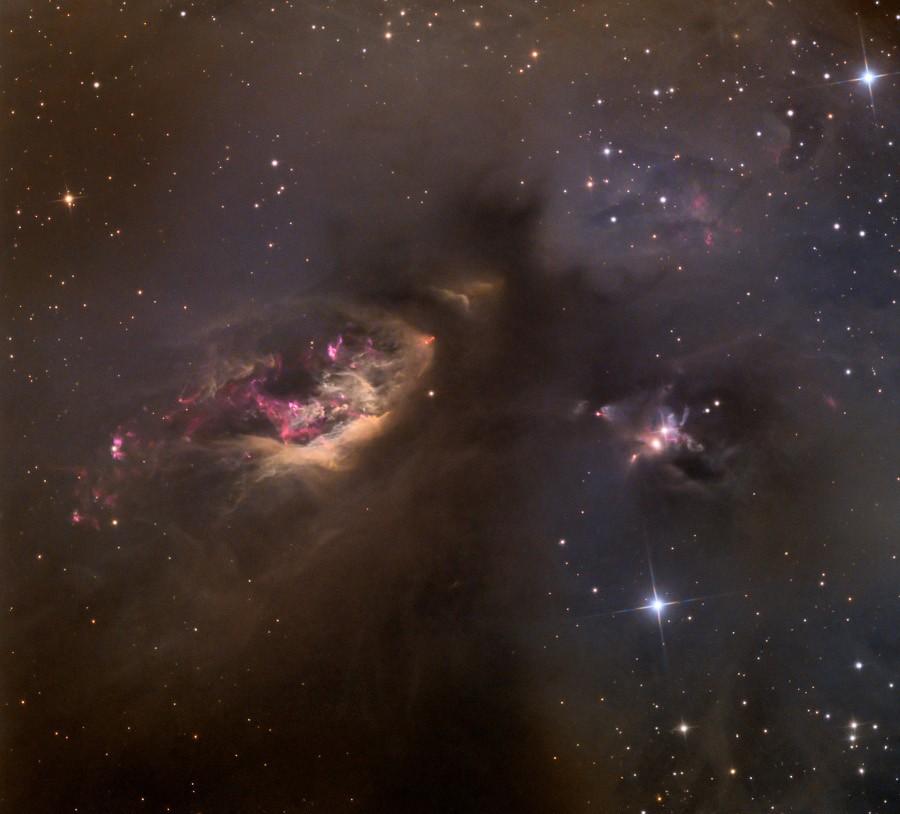The Daily Wildcat interviewed Adam Block, program coordinator and primary speaker at the Mt. Lemmon SkyCenter and renowned astrophotographer, via Skype. He sat in front of an image of IC443, a red and pink gaseous bubble filled with scintillating blue and gold stars. Block, who captured the image himself, described the colorful cloud as “star guts.”
Another one of Block’s photos, an image of stellar nursery Sh2-239, was featured as NASA’s Astronomy Picture of the Day on Dec. 8, 2011. According to the Mt. Lemmon SkyCenter website, Block’s work has been published on NASA’s site more than 50 times.
Daily Wildcat: What is astrophotography and why is it important to astronomy and science as a whole?
Block: Taking images of the universe can be done for different purposes. When I’m at the Mt. Lemmon SkyCenter and I do public outreach programs, I can only do outreach for as far as my voice will carry. Pictures, on the other hand, can be published all around the world and excite people about astronomy and science. Now, what I get to do is not scientific, but rather, in my mind, a powerful public outreach activity. It’s important for me because it’s another way to get people excited about astronomy and science.
How did you become interested in astrophotography?
I’ve always been into astronomy, even as a small child. At the age of 3 or 4 years old this has been my one thing in life, and from the beginning I pursued avenues that allowed me to share my passion. Trying to capture what I was seeing through the telescope was a natural way to go, especially at a time when it became easier to attach film cameras to a small telescope. So for me, the interest began simultaneously with my interest in astronomy. It was another way for me to share. I was probably 12 or 13 years old when I got my first camera, and that’s when I attached it to a back of a telescope to try to take a picture of something.
How successful were those first attempts?
(Laughing) Not very! Astrophotography is fraught with difficulties because acquiring the information is difficult. To create a picture like you see back here (pointing to the picture of IC 443 hanging on the wall), I would have spent between eight to 10 hours at the telescope collecting data and taking pictures through many different filters. Each image would be 10 or 15 minutes in length. Then, I take multiple images and add them all together. It’s a pretty big investment to make these pictures.
So how do you make one of these images?
Generally, to create one of these images you use a camera that is a little more sophisticated than a regular digital camera. The difference is you can expose it for a very long period of time and the chip is cooled (meaning the chip is literally made colder), making the electronics more sensitive to light and more capable of detecting very dim objects. You physically attach the camera to the telescope and then you calibrate and focus your instrument. When you’re taking the picture, you need to track and compensate for the movement of the telescope as you’re acquiring the data. Then, you use specialized software on a computer to take that data and calibrate it to remove all the instrumental artifacts and noises. You align all of the images and combine them so you get a color picture.
Now, the camera records more information than you can display on your computer monitor at any one time. So, as someone who’s trying to present the image, I get to choose, at some level, the contrast, the brightness and the color saturation of the final result. However, I’m not picking the color. Things that are blue are blue and things that are red are red. But there are choices I get to make as far as the final production of these images, and that all takes place using the software.
What is Sh2-239’s story and where can you see that in the photo?
This is the beginning of a story that will eventually lead to a star cluster.
Right now, this is a big cloud of gas and dust in which stars are forming. The picture provides a three-dimensional perspective, because there is a cloud that extends upward and then this thing coming out of it. That is where stars are being born. When stars start their lives they usually have winds — they literally blow things away from them. In the image there’s a cavity with little red things inside of it. Those are the stars and their outflows are forming and blowing stuff away.
Will this photo be used in any way? Where does it go from here?
I think of this photo as a form of “astrophoto,” scientific tweeting. This is what the Hubble Space Telescope has been doing for years. Astronomers specifically set aside time to take pretty pictures and release them to the public saying, “Hey! Here’s the pretty universe out there!” Other scientists may want to use the data in another way, and it may be published elsewhere — the photo doesn’t necessarily have to go anywhere from here.








